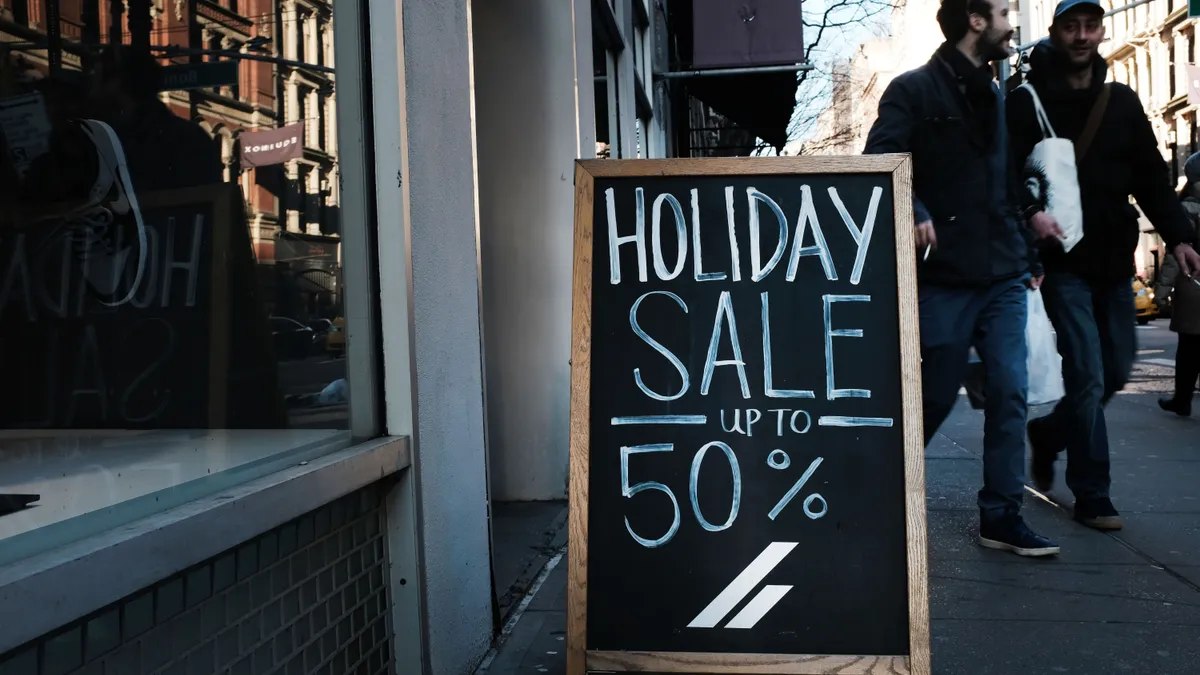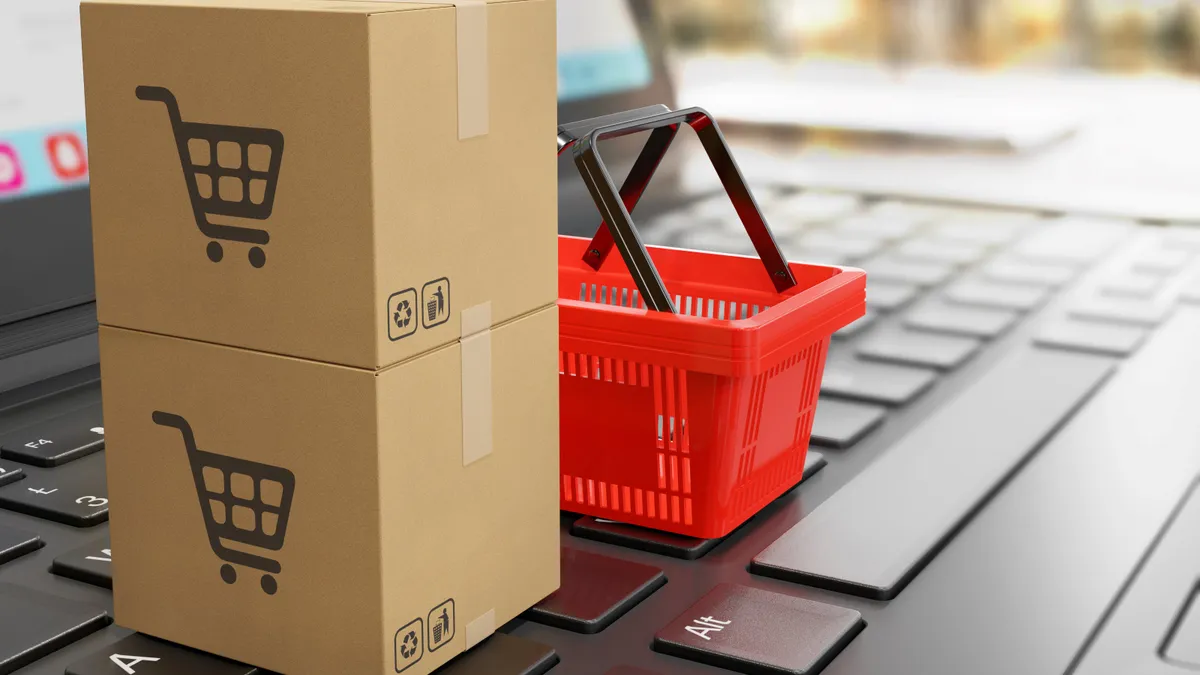With the start of the holiday shopping season only eight weeks away, merchants are gearing up to give consumers what they want. At the top of that list, payments executives say, is payment choice.
In this fifth edition of our CEOs Sound Off series, we talked with three CEOs connected to the payments industry to get their perspective on payment and checkout trends this holiday season, and how merchant and consumer wish lists in this area differ.
Consumers contending with higher prices due to inflation will want payment methods that afford them flexibility, CEOs said. That includes buy now-pay later, the pay-over-time trend that’s gained steam during the COVID-19 pandemic. Shoppers also have come to expect a variety of payment options, CEOs said, and the pressure’s on merchants to offer alternative payment methods such as digital wallets, or risk losing customers.
Below are insights from Maju Kuruvilla, CEO of San Francisco-based e-commerce checkout startup Bolt Financial; Carolyn Rodz, CEO of Houston-based Circular Board, parent company of small business resource platform Hello Alice; and John Lunn, CEO of cloud-native payment orchestration platform Gr4vy, which is based in San Mateo, California.
Editor’s note: The interview responses have been edited for brevity and clarity.
PAYMENTS DIVE: What are consumers and merchants looking for when it comes to checkout and payment capabilities this holiday season, and how do their wish lists differ?
JOHN LUNN: From a consumer perspective, they're looking for their favorite ways to pay; in the U.S., that might be Venmo, that might be PayPal, that might be something like Affirm, or one of the other buy now-pay later [providers], or it might be a bank transfer. Merchants need to look at how they're going to give consumers more choice about how they pay at checkout. U.S. retail and European retail, they're both in decline after COVID-19. But other parts of the world, like Latin America and Asia, are still growing. Being able to take orders from other countries is going to be even more important than it was last year. That means that you also need to support other payment types because in many of these parts of the world, credit cards don't cut it and people have other ways they like to pay.
CAROLYN RODZ: We're seeing a lot more digitization of the entire retail process. We've had more movement towards mobile payments. From a consumer’s perspective, they're really looking for flexibility, particularly now with inflation. Things like buy now-pay later are certainly convenient. From a merchant consideration, they're looking at contactless options, they're trying to figure out how they get more insights about the consumer so that they can make smarter recommendations, so they can create a better online experience.

MAJU KURUVILLA: As e-commerce is trending down a little bit, a lot of merchants are really focused on how this holiday is going to play out and how they can convert more. Checkout conversion is absolutely top of mind. The other thing is payment convenience. More Gen Zers are part of the shopping mix, and people are looking for more convenience and payment options. Are merchants able to meet the $140 billion of opportunity there with Gen Z shoppers?
How will this holiday spending season be affected by inflation or e-commerce growth slowing?
RODZ: We’re going to see a lot more shopping for pricing. That's going to drive some of the move towards e-commerce. By all accounts, people are expecting a ramp up on e-commerce spending this year. I don't see that easing off. The retailers that are really well positioned for [search engine optimization], the retailers that are very price competitive are going to probably be the most resilient this year and see the greatest surge in their business. While inflation has certainly made people smarter about how they're spending, I don't think we're going to see the overall volume decline.
KURUVILLA: More traffic is shifting towards the physical store. Holding on to [online] consumers and engaging with them directly is going to be very critical for merchants, and it starts with providing them a very convenient e-commerce checkout option. Especially with this new economy, the foundational thing everyone is looking for is, how do you engage with the shoppers? How do you get to know them? How do you give them a friction-free experience?
What payment methods do you expect will be most popular this season and why?
LUNN: Buy now-pay later will be pretty prominent this year. You'll see some of these alternatives, things that are linking directly to bank accounts and other systems allowing the consumer to really manage how their money is spent – those will become more prominent this year.

RODZ: Anything that's giving the consumer flexibility in terms of how they're paying. There's more and more options for consumers. There's more and more awareness of what those options are. There's almost an expectation now that when somebody goes shopping, that's what they're going to get.
KURUVILLA: Alternative payments will continue to see more adoption and growth. During Black Friday and Cyber Monday last year, around 20% of Bolt transactions utilized alternative payments like PayPal and Apple Pay, and that was almost a 26% increase year-over-year. Alternative payment growth is going to continue, especially with the Gen Z population.
What’s different this year in terms of how merchants are approaching payments in e-commerce, and how does the holiday spending season inform future innovation in the payments space?
LUNN: You're seeing the variety of payment types increase everywhere in the world. For many years, you had credit cards as the way to pay and that's about it. Then PayPal got very prominent. You're starting to see the growth of Venmo, you see the rise of open banking, you've seen buy now-pay later. Just the pure scale of different payment methods that are available and being used is very different this year. A lot of retailers might need to catch up very, very quickly to provide the payment types that consumers need right now. The volume of payment that happens during this season – first you've got Black Friday, then Cyber Monday — and the cadence and speed of payments really gives you a lot of data: how people spend, where they spend, what's different from last year.

RODZ: The level of sophistication in terms of how business owners are selling online has ramped up significantly over the past few years, obviously driven by COVID. At the same time, technology has really stepped up. It's much more accessible to small business owners, whereas before these were technologies that were largely built in-house, they were very specialized, very expensive to access. We're seeing things like buy now-pay later as a really simple integration into an e-commerce store. A lot of payment options like PayPal, Venmo and Apple Pay are enabling people to shop very quickly, without having to pull out a credit card number. The easier they can make it, that’s probably the biggest focus for merchants. And the holiday season is the precursor for the year to come. We can see very quickly, what is consumer sentiment at this moment in time? How consumers respond in this period of time is going to define how technology develops over the coming months.


















